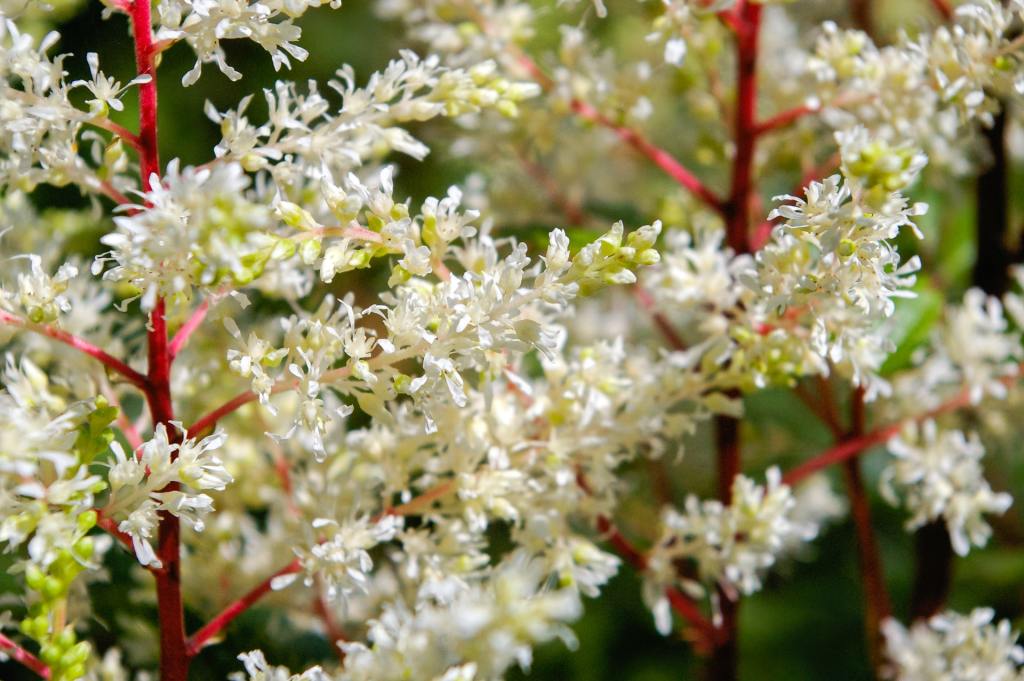Sometimes it can be hard to find a plant that loves the shade and has show-stopping blooms. But, with the astilbes, you can stop your search. These plants love the shade, moist soil, and have fantastic blooms that all your neighbors will stop to look at. Learn more about these incredible plants that not only bring an extra pop of color to your garden, but can also help out the local bees.
About astilbes
These iconic perennial plants are ideal for shady garden beds, and there are 25 species of astilbe to choose from. With hundreds of varieties to suit almost any garden design and their wide USDA zone hardiness range (3 to 8), the astilbes can find a home in nearly every garden across the United States. Some of these varieties have stems that arch while others have straight and tall stems; the best one for you will depend on the style you prefer. The flowers of an astilbe plant come in a wide range of colors, including pink, red, white, deep red, soft lavender, and violet. These blooms range in size as well, from 6 inches to 2 feet. Their deep, fern-like foliage is a beautiful backdrop for these stunning, cone-shaped blooms to shine and an excellent addition to a garden made for pollinators. Many beneficial pollinators like honey bees and butterflies love these blooms. So if you’re planning to plant a section of your garden specifically for pollinators, astilbes are a great addition.

How to care for astilbes
Astilbes prefer shady spots with a bit of dappled morning sun. If they get too much sun, their leaves will burn, but they won’t bloom as heavily if they don’t get enough.
They won’t do well in dry, harsh soil but will flourish in rich soil with added organic material. Consider supplementing your soil with natural compost and topsoil to ensure your astilbes plant has everything it needs to grow and bloom beautifully.
Unlike some plants, the astilbes like their soil almost constantly moist. Don’t drown the plant with too much watering, but be sure the soil doesn’t completely dry out between waterings. The shady spot you’ve chosen should help keep the soil moist.
If you aren’t sure if your astilbes are getting enough or too much sun, take a look at its leaves. Astilbes’ leaves will quickly burn leaves if the plant is getting too much sun. Before you plant astilbes, you should study the sun’s movement across your lawn. This way, you can know precisely where and when the sun will hit the spot you have in mind, and you can be sure to avoid any burnt leaves –– or worse, dead plants.
After about four years of growth, your astilbes plant is probably ready to be divided if you’re running out of space. Dividing these plants is a great way to move them to other parts of the yard or share them with friends, family, or neighbors. It’s best to do this in the spring. You can either put them in a pot or directly sow them back into the ground.

How to keep astilbes blooms healthy
Astilbes bloom for about two to three weeks, depending on the variety. Some varieties bloom in May or June, while others bloom later in the year, around July or August. To encourage big and healthy blooms, there are a few things you can do to your astilbes plant to get the most out of those gorgeous blooms. First, be sure to fertilize with a fertilizer that’s higher in phosphorus. Organic material made with compost is ideal, but you can purchase a bag or bottle of fertilizer at almost any garden center or department store.
Unlike other flowering plants like roses, cutting off spent blooms won’t encourage the astilbes to bloom more. You can cut these dying flowers if you prefer not to have them on there, but you can also leave them until winter. However, just like roses, astilbes are excellent cutting flowers and can be a great way to bring a little splash of color into your home right from your own garden.
The astilbes plant is a classic, flowering beauty found in almost every garden across America. While they aren’t considered high maintenance, it can be a little tricky to find the ideal growing spot that prevents leaves from burning and still promotes lots of blooms. So be sure to take notes about the sun’s journey across your yard before deciding where to plant the astilbes, and your astilbe plant will grow big and happy.


